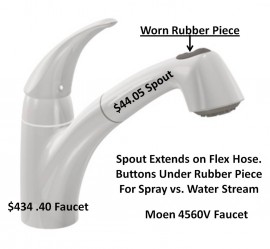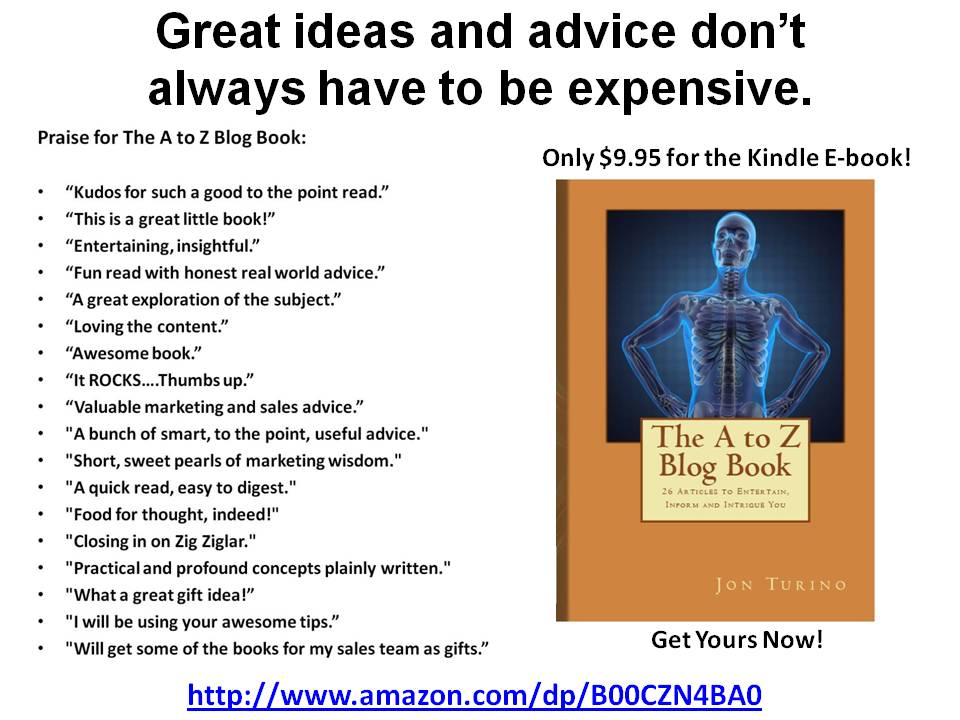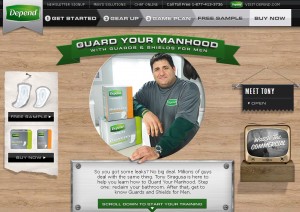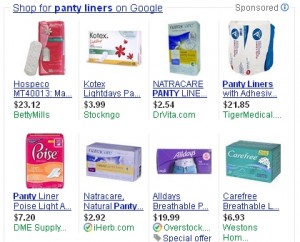November 23rd Monday Marketing Minutes
The third episode of Monday Marketing Minutes™ was broadcast live via YouTube using Google+ Hangouts On Air.
Here’s a summary of the tips and advice that were included in this episode. You can click on the image above to watch the replay on YouTube at your convenience. And if you have marketing questions you’d like answered you can always send them to me at jon@jonturino.com for inclusion in a future episode of Monday Marketing Minutes.
 The tips presented during the November 23rd, 2015, episode have to do with measuring your marketing. If you can’t measure something it is virtually impossible to improve it so measuring and monitoring are part of the cohesive and comprehensive marketing plan mentioned in the November 16th episode.
The tips presented during the November 23rd, 2015, episode have to do with measuring your marketing. If you can’t measure something it is virtually impossible to improve it so measuring and monitoring are part of the cohesive and comprehensive marketing plan mentioned in the November 16th episode.
There are a great many tools available to you on your website and social media platforms, like Google Analytics, Facebook Insights and LinkedIn Statistics and they will work best if you plan your landing pages to take advantage of them.
The idea is to monitor your statistics to see what is working the best and use that information to do more of what works and less of what doesn’t work. It’s not rocket science but it can make a huge difference in the level of success that your marketing campaigns achieve.
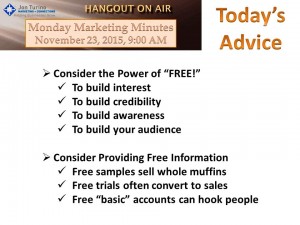 The advice presented during this episode dealt with considering the use of the Power of Free as a marketing strategy or tactic. You can use free things to build interest, build credibility and awareness and even to increase the size of your audience.
The advice presented during this episode dealt with considering the use of the Power of Free as a marketing strategy or tactic. You can use free things to build interest, build credibility and awareness and even to increase the size of your audience.
Think about it. The bakery that provides free samples sells a lot more muffins or cupcakes or pies or cakes than the one down the street that doesn’t offer them. Free trials are a great way to get people “hooked” on your product so that they will later convert to a version for which you get paid. The same goes for so-called “basic” accounts that give you some, but not all, of the full feature set of the product. These things work and they don’t have to cost a lot of money.
Today’s episode was the first broadcast to include a guest presenter — Mr. Leon Henry from WebStep in the U.K. Leon is a marketing and social media consultant who helps his clients similarly to what I do for mine.
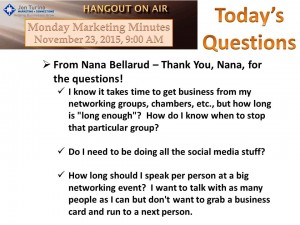 We also had three questions from an audience member, Nana Bellerud, on the topic of business networking and those were addressed during the audience question portion of the program.
We also had three questions from an audience member, Nana Bellerud, on the topic of business networking and those were addressed during the audience question portion of the program.
You can watch the replay of the complete broadcast here. Enjoy and please do remember to send me your questions for future episodes of Monday Marketing Minutes. You’ll find links to all past and future episodes HERE.
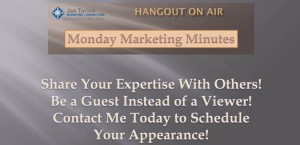 And, as always, please do contact me if you’d like help with your marketing plans, strategies, and tactics. I’d love to be of service to you in building your business through better marketing.
And, as always, please do contact me if you’d like help with your marketing plans, strategies, and tactics. I’d love to be of service to you in building your business through better marketing.
####



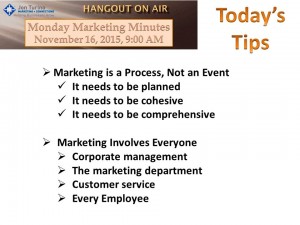
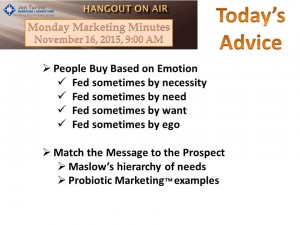
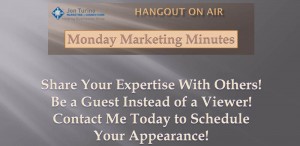


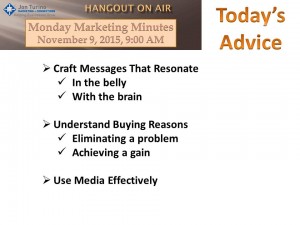

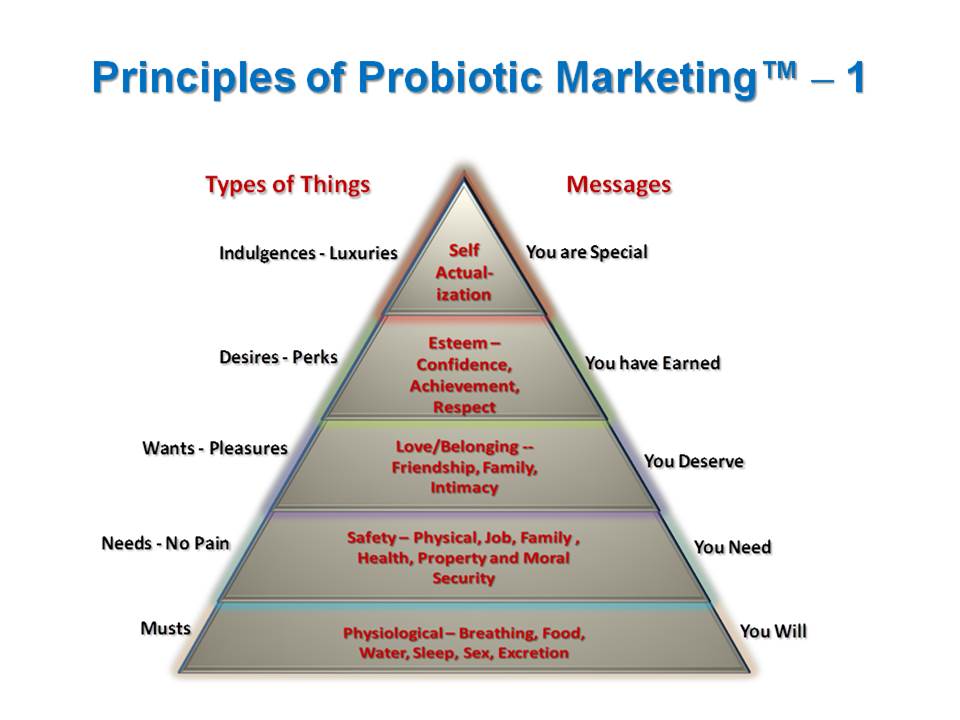




 at
at
 I had the book printed on very nice paper and the hard cover was a walnut veneer with gold printing. Very good looking and conveying very high quality. The book was titled “Design for Testability” and I priced it at $95. That’s $95 in 1978 dollars, which today would be roughly $347. For a 77-page book in 8-1/2” x 11” format.
I had the book printed on very nice paper and the hard cover was a walnut veneer with gold printing. Very good looking and conveying very high quality. The book was titled “Design for Testability” and I priced it at $95. That’s $95 in 1978 dollars, which today would be roughly $347. For a 77-page book in 8-1/2” x 11” format.
